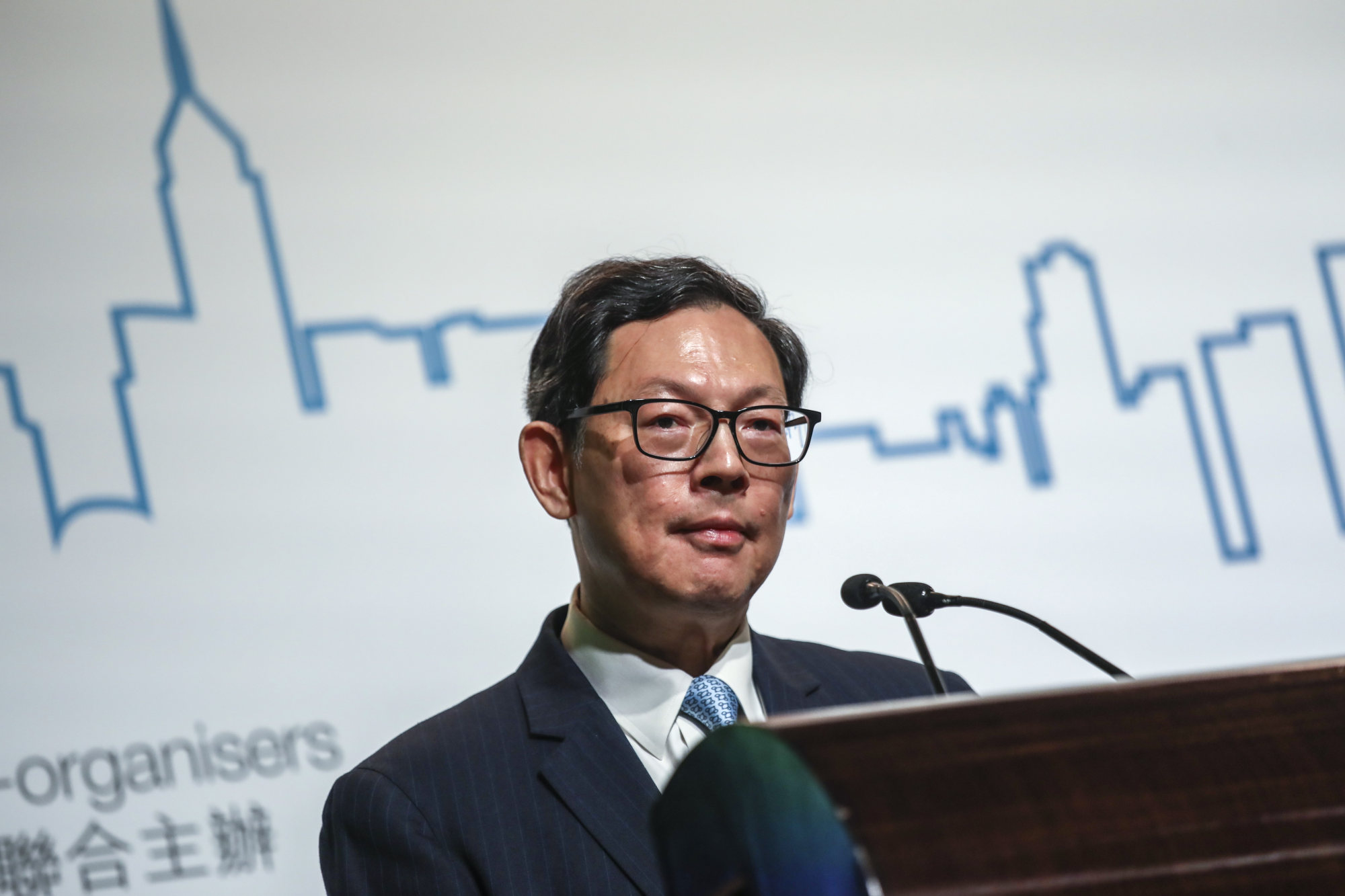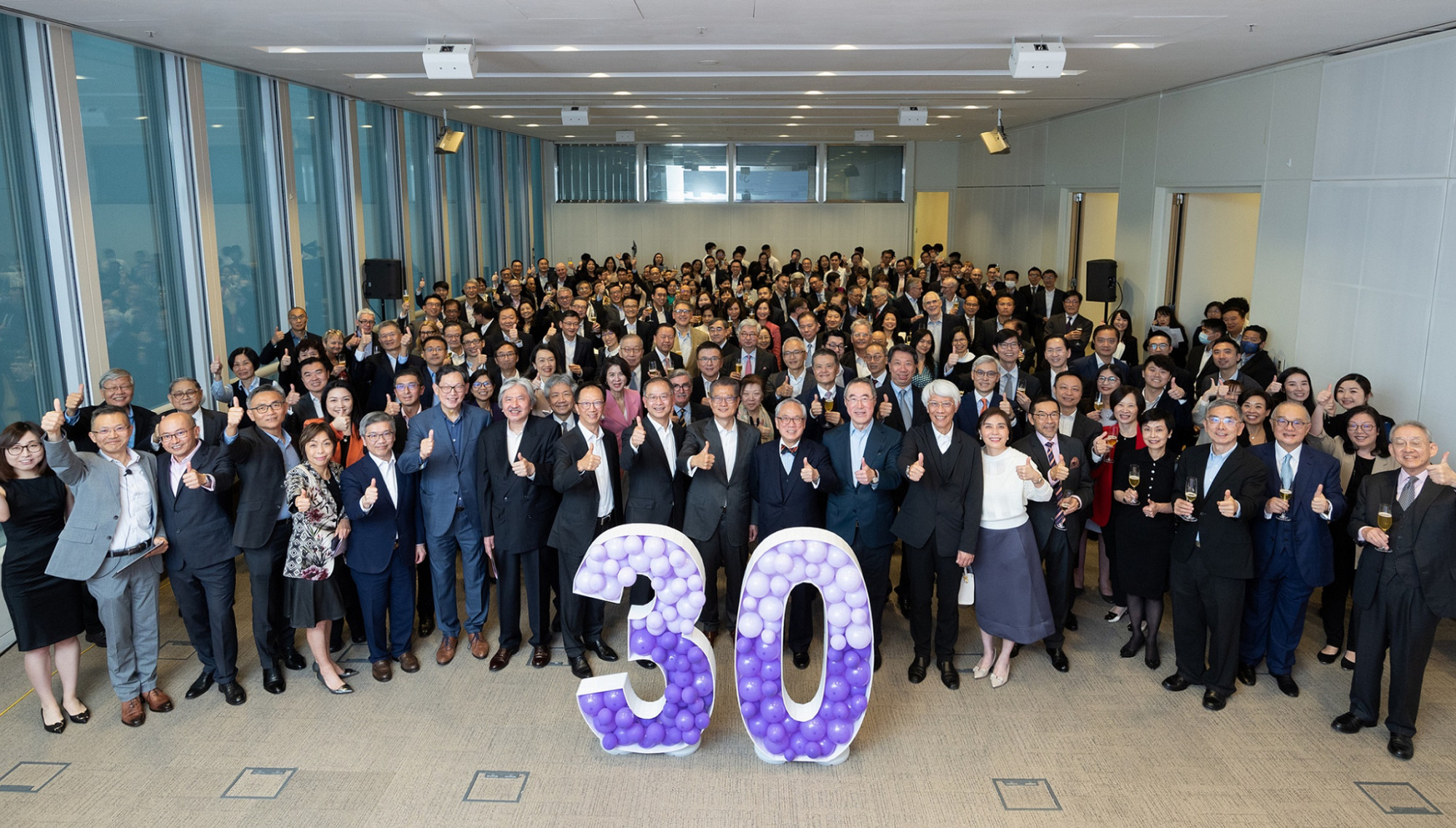30 years of HKMA: Hong Kong’s de facto central bank drives fintech and green finance innovation, grows global stature
[ad_1]
Yue himself took over the reins as chairman of the BIS meeting for governors from emerging markets for a three-year period in September. The Basel-based BIS, known as the “bank for central banks”, serves central banks in their pursuit of monetary and financial stability, and international cooperation.
“The BIS appointment is significant as this is not only a recognition of the work and expertise of the HKMA, but more importantly, of Hong Kong as an international financial centre,” Yue said. The new role will allow the HKMA to forge closer connections with emerging economies including Brazil, India and others, he added.
The HKMA is at the forefront of developing CBDCs, tokenised assets, green finance and internationalisation of the yuan.
HKMA, major banks keep rates unchanged in relief to Hong Kong businesses, homeowners
HKMA, major banks keep rates unchanged in relief to Hong Kong businesses, homeowners
“The upgrading of our banking system to a new and higher level of smart banking is not just something nice to have, but a must,” Chan said in September 2017 when he announced seven major measures to promote fintech, including introducing FPS and virtual banks in the city.

A new generation of eight branchless lenders has been operating since 2020, while the five-year-old FPS has more than 10 million users, who conducted HK$387 billion (US$49.4 billion) worth of transactions via their mobile phones in September.
“These mortgage tightening policies were vital to safeguarding the banking system against the risk of widespread default in mortgage loans, which was a painful lesson learned from 1997 until 2003, when property prices went down by more than 60 per cent,” Chan told the Post in an interview last year.
Safeguarding the stability of the banking sector and exchange rate were at the core of the HKMA’s formation, just four years before the handover.
Joseph Yam Chi-kwong, who took charge as the HKMA’s first CEO in April 1993, recalled the establishment of the authority was first mulled in the 1980s, when Hong Kong was beset by monetary and banking crises that lingered for five years.
Back then, seven banks – Hang Lung Bank, Overseas Trust Bank, Hong Kong Industrial and Commercial Bank, Kar Wah Bank, Wing On Bank, Far East Bank and Hong Nin Bank – had to be either taken over by the government or rescued by “white knights”.

“Five years of firefighting in the monetary and financial systems pointed to the importance of reform,” Yam said in a statement to the Post.
The reforms started with a “low key, technical but strategically very important one” called the “accounting arrangements”, which shifted monetary control from the then-clearing bank HSBC to the government in 1988, he said.
“The move greatly enhanced the ability of the authorities to deliver monetary stability – a watershed in the monetary and financial history of Hong Kong, marking a switch from a fire-fighting mode to a fire-prevention mode,” Yam said.
The HKMA was formed by merging the Office of the Exchange Fund and the Office of the Commissioner of Banking to take care of banking and financial stability, maintaining the peg link system formed in 1983 that fixed the exchange rate at 7.8 per US dollar, as well as investing the Exchange Fund, the city’s foreign exchange reserves to defend the local currency and maintain the stability of the financial system.
Both offices previously were part of the government’s Monetary Affairs Branch, with staff paid salary in line with other civil servants. Moving the HKMA outside the purview of the government has allowed it flexibility to hire and recruit staff.
After the HKMA was set up, the authority moved from a small office in Admiralty to its present premises in Two IFC in November 2003, where it occupies 14 floors in the 88-storey tower. HKMA’s headcount has grown from about 275 at its inception to more than 1,000 currently.

“Three decades on, the HKMA has carried out its duty well in maintaining the exchange rate of the Hong Kong dollar, as well as the stability of the financial markets and the banking industry,” said Wilson Chan Fung-cheung, the associate director of City University of Hong Kong’s MBA programme.
“We no longer have bank failures like we did in the 1980s. The HKMA has helped Hong Kong weather the 1998 Asian financial crisis, the 2009 global financial crisis, as well as three years of the pandemic.”
“We rely on the professionalism of the whole team who work together to manage risks,” Yue said.

Increasing the HKMA’s visibility on the global stage has always been an area of focus for Yue since taking over the reins in October 2019 following Chan’s retirement.
“There are still misguided perceptions overseas about what Hong Kong is like,” he said. “Seeing is believing. It is very effective to bring [global banking] heavyweights to Hong Kong to come and feel the energy, the vibrancy and the opportunities here.
“It is important to continue such efforts to increase the participation of the HKMA on the global stage by taking leadership roles in various international forums, so as to enhance the visibility of Hong Kong as a whole.”
It was Yue who launched the Exchange Fund’s long-term growth portfolio in 2009 to enhance its performance. The portfolio invests in private equity funds, overseas real estate and other projects to achieve better returns than traditional vehicles such as bonds or stocks.
Exchange Fund reports first-half gain of US$14b as global markets rebound
Exchange Fund reports first-half gain of US$14b as global markets rebound
“The Exchange Fund is Hong Kong people’s savings. While we want to make sure we have sufficient reserves to safeguard the financial system, we wanted to see if we could use some of the reserves to invest in some long-term projects to achieve better returns,” he said.
“This was a completely new concept. The HKMA was the first central bank to have such a portfolio.”
The strategy has proved to be a success, with the portfolio recording an annualised internal rate of return of 13 per cent from 2009 until 2022, versus the fund’s overall return of 4 per cent.
HSBC, Hong Kong’s biggest lender, worked closely with the HKMA on the yuan internationalisation project, said David Liao, co-CEO of Asia-Pacific at HSBC.
“During my time in mainland China from 2005 to 2020, I remember the palpable sense of excitement we all felt as the financial sector worked together with our central bank peers to explore how Hong Kong could further support China’s capital market liberalisation,” Liao said.
One role the HKMA has not taken, unlike other central banks, is the printing of currency. HSBC, Standard Chartered and Bank of China (Hong Kong) are the three designated lenders that design and print banknotes, with the signature of their top bosses, including Liao, appearing on the currency.
The HKMA will continue to play a vital role in the country’s development plan to ensure Hong Kong remains a leading international financial centre, promoting the Belt and Road Initiative, digital currencies and green finance, City University’s Chan said.
“It is not just an agency to prevent crises, but also a leader that is involved in taking initiatives with central banks worldwide.”
[ad_2]
Source link





